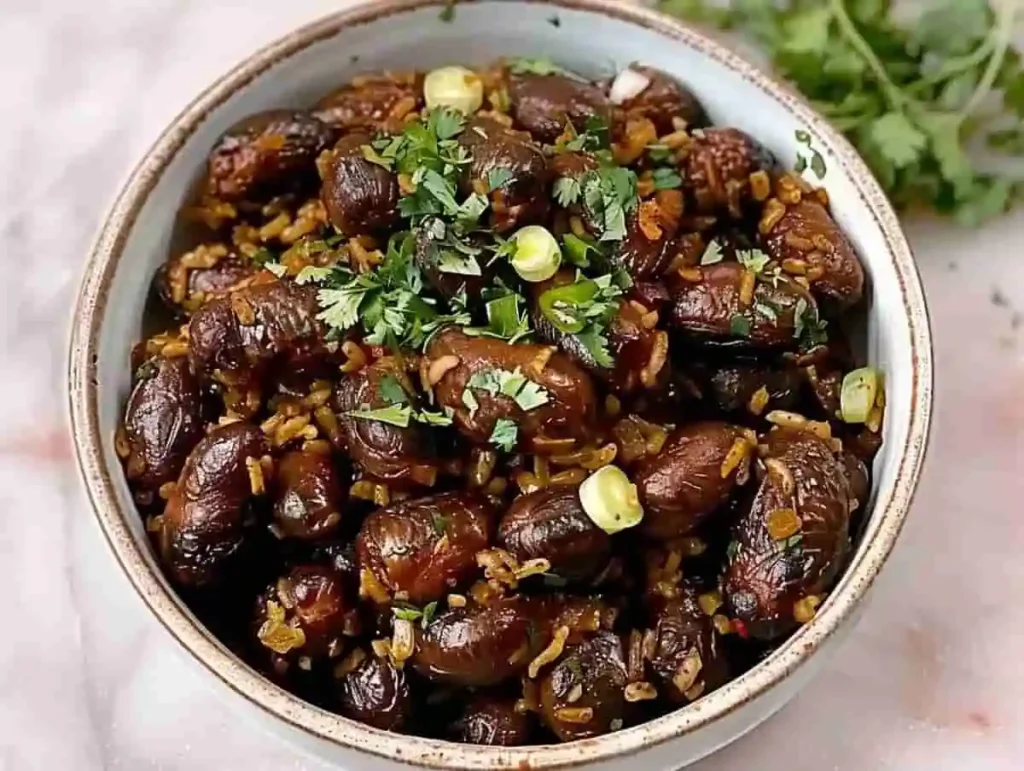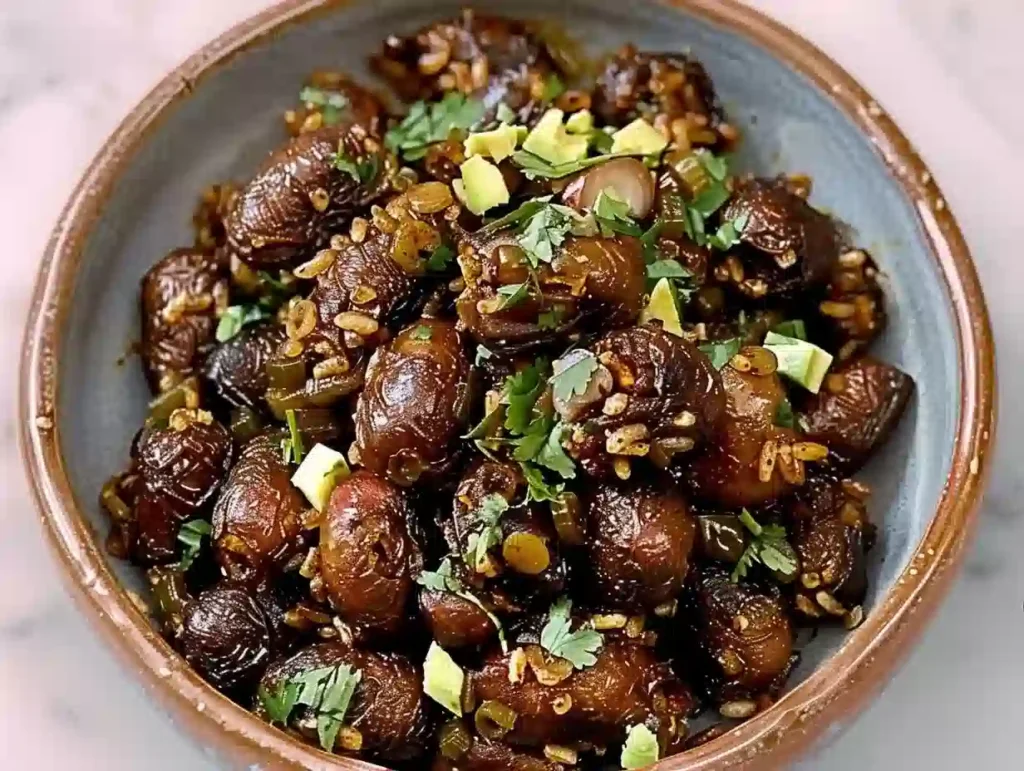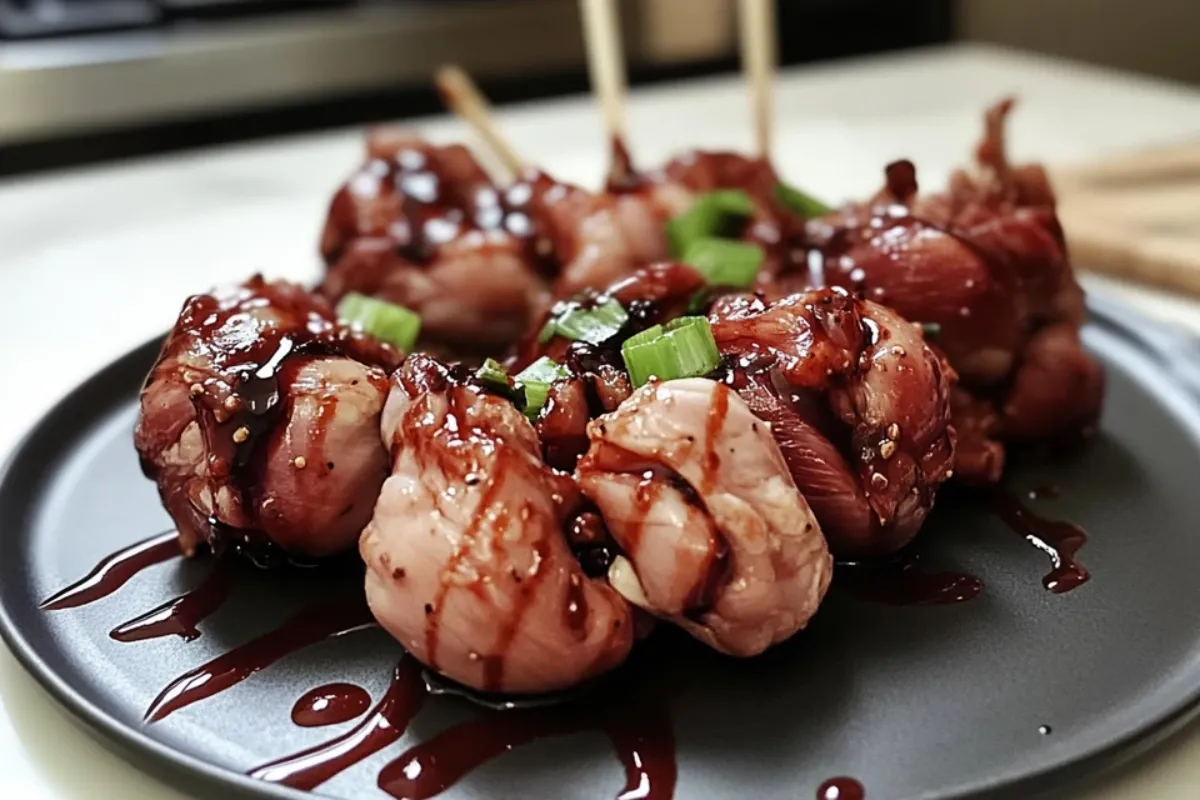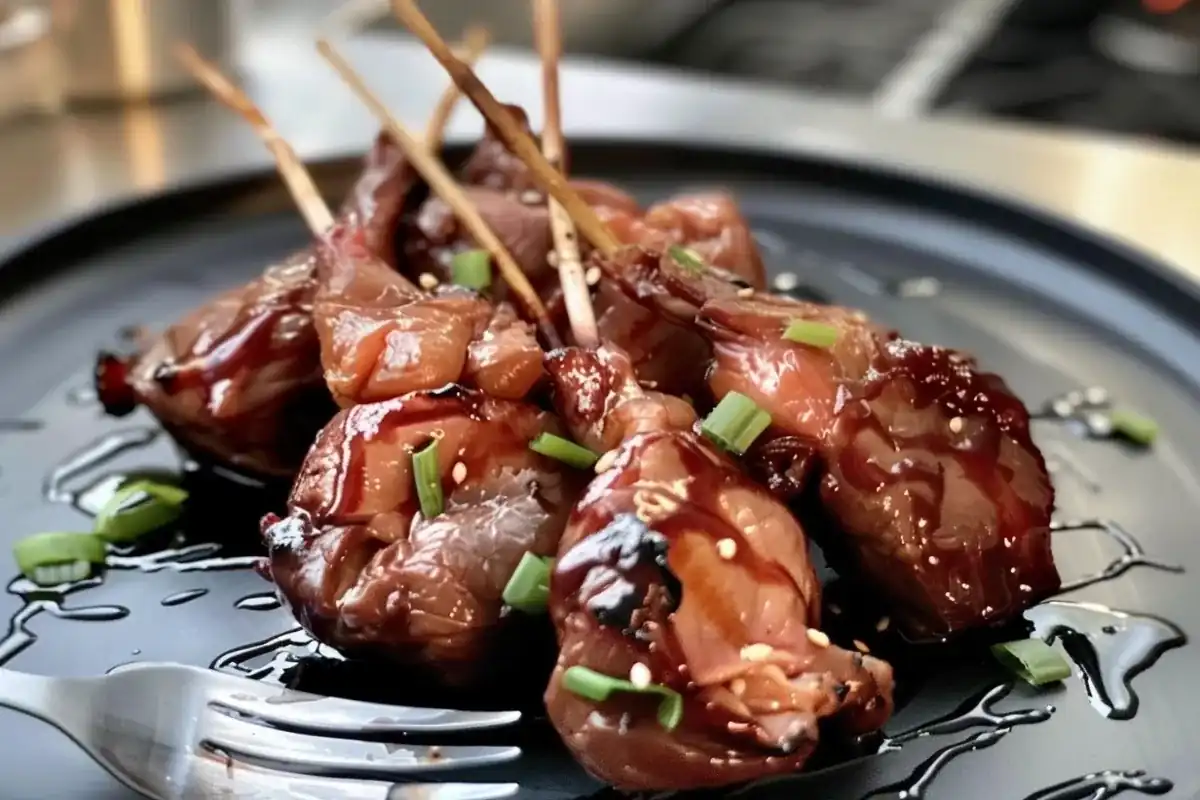Chicken heart is a nutrient-dense organ meat that has been enjoyed in various cuisines worldwide. Its rich flavor and versatility make it a valuable addition to diverse dishes. This article delves into the nutritional profile, health benefits, culinary applications, and considerations for incorporating chicken hearts into your diet.
Introduction
Chicken heart is a small but mighty organ meat, offering a wealth of nutrients and a unique taste. Incorporating chicken hearts into your meals can enhance both the nutritional value and flavor of your dishes. This guide explores the various aspects of chicken hearts, from their health benefits to culinary uses.
1. Nutritional Profile of Chicken Hearts
Chicken hearts are packed with essential nutrients that contribute to overall health.
1.1 Macronutrient Composition
Per 100 grams, chicken hearts provide:
- Calories: 153
- Protein: 15.6 grams
- Total Fat: 9.3 grams
- Carbohydrates: 0.7 grams
1.2 Micronutrient Content
Chicken hearts are rich in:
- Iron: 6 mg (74% of the Daily Value)
- Zinc: 5.6 mg (51% of the Daily Value)
- Vitamin B12: 13.0 µg (542% of the Daily Value)
- Riboflavin (Vitamin B2): 1.2 mg (92% of the Daily Value)
These nutrients play crucial roles in energy production, immune function, and red blood cell formation.
2. Health Benefits of Chicken Hearts
Incorporating chicken hearts into your diet can offer several health advantages.
2.1 High-Quality Protein Source
With 15.6 grams of protein per 100 grams, chicken hearts provide essential amino acids necessary for muscle growth and repair.
2.2 Rich in Iron and Zinc
The high iron content supports oxygen transport and energy levels, while zinc is vital for immune function and DNA synthesis.
2.3 Abundant in B Vitamins
Vitamins B12 and B2 in chicken hearts aid in energy metabolism and neurological health.
3. Culinary Uses of Chicken Hearts
Chicken hearts are versatile and can be prepared in various delicious ways.
3.1 Grilled Chicken Hearts
Marinate chicken hearts in a mixture of olive oil, garlic, and herbs, then grill them on skewers for a flavorful appetizer.
3.2 Sautéed with Onions and Mushrooms
Sauté chicken hearts with onions and mushrooms for a hearty and savory dish that pairs well with rice or potatoes.
3.3 Stir-Fried in Asian Cuisine
Incorporate chicken hearts into stir-fries with vegetables and soy-based sauces for an authentic Asian meal.
4. Considerations When Consuming Chicken Hearts
While chicken hearts are nutritious, certain factors should be considered.
4.1 Cholesterol Content
Chicken hearts contain dietary cholesterol; individuals with specific health conditions should monitor their intake accordingly.
4.2 Purine Levels
High purine content in chicken hearts may affect individuals with gout or related conditions.

5. Sustainability and Ethical Considerations
Utilizing chicken hearts promotes whole-animal consumption, reducing food waste and supporting sustainable eating practices.
6. Purchasing and Preparing Chicken Hearts
Chicken hearts can be found at butcher shops and specialty markets. Proper cleaning and cooking are essential to ensure safety and enhance flavor.
7. Cultural Significance of Chicken Hearts
Chicken hearts hold culinary importance in various cultures, featuring prominently in dishes from Brazil, Japan, and South Africa.
8. Recipes Featuring Chicken Hearts
Here are some popular recipes that highlight the versatility of chicken hearts:
8.1 Brazilian Pan-Fried Chicken Hearts
A quick and flavorful dish seasoned with garlic and herbs.
8.2 Japanese-Style Yakitori
Grilled chicken hearts glazed with a savory sauce, served on skewers.
8.3 Spicy South African Chicken Hearts
A spicy stir-fry incorporating traditional South African spices.
9. Nutritional Comparison with Other Organ Meats
Comparing chicken hearts to other organ meats can provide perspective on their nutritional value.
9.1 Chicken Hearts vs. Chicken Livers
Both are rich in nutrients, but chicken livers have higher vitamin A content, while chicken hearts offer more zinc.
9.2 Chicken Hearts vs. Beef Hearts
Beef hearts contain more protein per serving, but chicken hearts have a milder flavor and are lower in calories.
10. Addressing Common Concerns
It’s important to address common concerns related to consuming chicken hearts.
10.1 Taste and Texture
Chicken hearts have a tender texture and a slightly gamey flavor, which can be enhanced with proper seasoning and cooking methods.
10.2 Food Safety and Preparation
Chicken heart preparation requires thorough cleaning and proper cooking to eliminate potential contaminants. Use fresh, high-quality chicken hearts from reliable sources. To ensure safety:
- Remove any excess fat or connective tissue before cooking.
- Wash thoroughly under cold water.
- Cook to an internal temperature of 165°F (74°C) to prevent foodborne illness.
11. Chicken Hearts in Popular Cuisines
Chicken hearts are featured in many traditional dishes across the globe.
11.1 Brazilian Cuisine: Grilled Hearts on Skewers
In Brazil, chicken heart skewers, or coração de galinha, are a popular barbecue treat often seasoned with salt, garlic, and olive oil before grilling.
11.2 Japanese Cuisine: Yakitori
In Japanese yakitori, chicken heart is grilled on skewers and basted with a sweet soy-based sauce. This street food is beloved for its rich, smoky flavor.
11.3 South African Cuisine: Spiced Chicken Hearts
South African dishes frequently include chicken heart in hearty, spicy stews or as a protein-packed snack roasted with paprika, chili, and coriander.
11.4 Russian Cuisine: Chicken Heart Stroganoff
In Russian cuisine, chicken heart is often simmered in creamy sauces with mushrooms, creating a dish reminiscent of traditional stroganoff.
12. Cooking Techniques for Chicken Hearts
12.1 Grilling and Roasting
Grilling or roasting enhances the natural flavor of chicken heart while adding a smoky, charred touch. Marinating before cooking helps tenderize and season the meat.
12.2 Sautéing and Stir-Frying
Sautéing chicken heart with garlic, onions, and spices is a quick way to create a flavorful dish. Stir-frying with vegetables offers a balanced and colorful meal.
12.3 Braising and Slow Cooking
Braising chicken heart in flavorful liquids like broth or wine produces tender, melt-in-your-mouth results. This method is ideal for stews and casseroles.
13. Chicken Heart Recipes: Nutritional Breakdown
The following table outlines the nutritional composition of common chicken heart dishes:
| Dish | Calories | Protein (g) | Fat (g) | Carbohydrates (g) |
|---|---|---|---|---|
| Grilled Chicken Hearts | 200 | 20 | 12 | 2 |
| Sautéed with Mushrooms | 250 | 22 | 15 | 3 |
| Chicken Heart Stew | 300 | 25 | 10 | 8 |
These dishes demonstrate how chicken heart can fit into a balanced diet.
14. Pairing Chicken Hearts with Side Dishes

14.1 Starches and Grains
Chicken heart pairs well with rice, quinoa, or mashed potatoes, providing a wholesome and satisfying meal.
14.2 Vegetables
Roasted or steamed vegetables, such as broccoli, carrots, or zucchini, complement the rich flavor of chicken heart.
14.3 Sauces and Condiments
Serve chicken heart with chimichurri, garlic butter, or creamy sauces to enhance its flavor profile.
15. Storage and Preservation of Chicken Hearts
15.1 Storing Fresh Chicken Hearts
Store fresh chicken heart in the refrigerator at 32–40°F (0–4°C) and consume within 1–2 days of purchase. For longer storage, freeze them in an airtight container for up to three months.
15.2 Reheating Leftovers
To retain texture and flavor, reheat cooked chicken heart gently on the stovetop or in the oven rather than using a microwave.
16. Exploring Variations: Fusion Cuisine
Chicken heart can inspire creative dishes by incorporating elements from different cuisines.
16.1 Mexican-Inspired Tacos
Use sautéed chicken heart as a filling for tacos, topped with fresh salsa and guacamole.
16.2 Mediterranean Salads
Toss grilled chicken heart with leafy greens, feta cheese, and a lemon-olive oil dressing for a light yet satisfying salad.
17. Chicken Hearts for Different Dietary Preferences
Chicken heart is a versatile ingredient that can be adapted to suit various dietary needs and preferences.
17.1 Low-Carb and Keto-Friendly
Chicken heart is naturally low in carbohydrates, making it an excellent choice for low-carb and keto diets. Pair it with non-starchy vegetables like spinach or asparagus for a balanced, keto-friendly meal.
17.2 High-Protein Diets
For those focusing on muscle building or weight management, chicken heart offers a protein-rich option. Add it to protein-packed dishes like omelets or stir-fries to increase your intake.
17.3 Paleo and Whole30 Options
As an unprocessed and nutrient-dense food, chicken heart aligns with paleo and Whole30 principles. Use natural seasonings and pair it with fresh vegetables for a compliant meal.

18. Economic and Practical Benefits of Chicken Hearts
Chicken heart is not only nutritious but also economical. Organ meats are often more affordable than other cuts, making them a cost-effective way to incorporate high-quality protein into your diet.
18.1 Budget-Friendly Protein Source
A pound of chicken heart is generally less expensive than popular cuts like chicken breast or thighs, offering great value for its nutrient content.
18.2 Easy Availability
You can find chicken heart at local butcher shops, Asian markets, or specialty stores. Many grocery stores also stock them in the frozen or fresh meat section.
19. Frequently Asked Questions About Chicken Hearts
While this article focuses on the key aspects of chicken heart, some common questions help clarify misconceptions.
20. Tips for Enhancing the Flavor of Chicken Hearts
20.1 Marination Techniques
Marinating chicken heart can enhance its natural flavors. Popular marinades include:
- Garlic and Herb: Olive oil, minced garlic, parsley, and thyme.
- Asian-Inspired: Soy sauce, ginger, sesame oil, and a touch of honey.
- Spicy Kick: Lemon juice, paprika, cayenne, and chili flakes.
20.2 Cooking Methods
To achieve the best flavor and texture:
- Grill or roast at high heat for a crispy exterior and tender interior.
- Sauté quickly to retain the moistness of the meat.
- Braise slowly for a softer texture and enhanced flavor absorption.
21. Exploring the Global Popularity of Chicken Hearts
21.1 Street Food Delight
In many countries, chicken heart is a common street food, celebrated for its convenience and rich taste. It’s skewered, grilled, and sold at roadside stands in Brazil, Indonesia, and the Philippines.
21.2 Fine Dining and Gastronomy
In modern gastronomy, chefs are incorporating chicken heart into upscale menus, highlighting its culinary versatility and rich flavor. Fine-dining dishes often pair it with unique ingredients like truffle oil or balsamic glaze.
22. Comparing Chicken Hearts to Other Protein Sources
22.1 Nutritional Highlights
| Nutrient | Chicken Heart | Chicken Breast | Beef Steak |
|---|---|---|---|
| Protein (per 100g) | 15.6g | 31g | 26g |
| Calories (per 100g) | 153 | 165 | 250 |
| Fat (per 100g) | 9.3g | 3.6g | 20g |
| Iron (per 100g) | 6mg | 0.9mg | 2.6mg |
This comparison highlights the nutrient density of chicken heart, particularly its high iron and moderate calorie content.
Conclusion
Chicken hearts are a nutrient-rich, versatile ingredient that has gained recognition in cuisines worldwide. Their impressive profile of protein, iron, and B vitamins makes them a valuable addition to any diet. Beyond nutrition, their unique flavor and adaptability offer endless culinary possibilities, from skewers and stews to salads and stir-fries.
Despite their high cholesterol and purine content, chicken hearts can be a healthy choice when consumed in moderation and prepared thoughtfully. They are also an economical and sustainable option, promoting the use of whole animals and reducing food waste.
Whether enjoyed as part of a traditional dish or incorporated into creative modern recipes, chicken hearts demonstrate how organ meats can be both delicious and nutritious, making them a compelling choice for adventurous and health-conscious eaters alike.

2 thoughts on “Chicken Heart: A Comprehensive Guide to Nutrition, Benefits, and Culinary Uses”